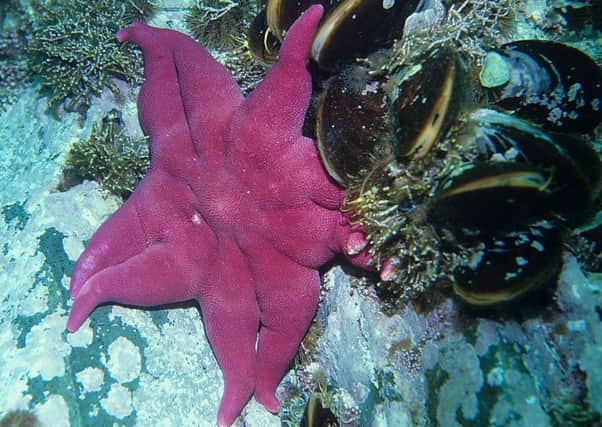Divers to save rare species from Gaelectric's proposed Islandmagee brine outlet


Planners are presently consulting on Gaelectric’s application to build the £300m Compressed Air Energy Storage facility, which entails the creation of underground salt caverns to store energy in the form of compressed air, which would then be released to generate electricity when demand is high.
The company is proposing to pump brine, the waste by-product, into the sea. Gaelectric’s environmental statement in support of the planning application indicates that an area of sea bed near the brine outfall “will be negatively impacted by the release of brine” over a three-year period. They estimate the sea bed should recover after another two years.
Advertisement
Hide AdAdvertisement
Hide AdThe document reveals measures the company might take to protect sea creatures ahead of the brine discharge, including sending divers down to survey and move rare purple sunstar starfish, which are not common around Larne lough, to around 200 metres away from the discharge site, and monthly checks in the de-brining period. Gaelectric says it should also be possible for divers to remove “large sessile or slow-moving species” and mermaid’s purses. Smaller immobile species, like anemones, would be killed off in the area close to the discharge pipe.


Gaelectric describes the impact on marine species and habitats as “minor and short-term” and anticipates that sea bed animals will “quickly re-colonise the seabed over a relatively short period of time, eg two years post-cessation”.
The company says hydraulic modelling has shown the brine plume will be around 100 metres in length and around 30 metres wide.
Referring to the possibility of seals being killed by ducted propellers of barges during the construction phase, the report says that “it should be possible to specify that vessels used by contractors are fitted with grilles or guards to prevent seals being pulled through the ducts”.
Advertisement
Hide AdAdvertisement
Hide AdTreasurer of Islandmagee Community Development Association, Frank Graham, disagreed with Gaelectric’s description of the impact on the marine environment as “short term.”


“This is not a minor period of time,” he told the Times. “I think that to consider a negative impact for even one year impact on the sea bed is unacceptable.
“You have tiny fish eggs and plankton which are going to be sifted out and I’m concerned for the next generation of fish stocks at the lough. Out of thousands of eggs laid by lobsters, only a few survive to maturity, and this is cutting the odds even further.”
Mr Graham said he had concerns about Gaelectric’s hydrodynamic modelling of the brine outlet. “The tidal model they used is a surface model, it’s not tailored to conditions here at Islandmagee,” he continued.
Advertisement
Hide AdAdvertisement
Hide Ad“The tide is not a road; it goes backwards and forwards and this proposal would take water, scald it with brine and kill everything that comes past it. Brine is heavier than water so it will sink to the bottom into a concentrated pool of salted water; will it then move with the tide and scour a bigger area?”
Mr Graham added: “I am urging people to get their individual letters of objection in before the consultation period closes.”
Asked about the quantity of brine discharge and whether the model used to determine brine distribution matched Islandmagee’s tidal flow predictions, a Gaelectric spokesperson commented: “We do not feel it is appropriate to respond in further detail while the statutory public consultation process is underway.
“We do, however, encourage members of the public to review the information on the project that is currently on display which addresses the questions asked.”
A Gaelectric spokesperson said the company would “consider” a request from Islandmagee Community Development Association to attend a public meeting in Islandmagee Community Centre.